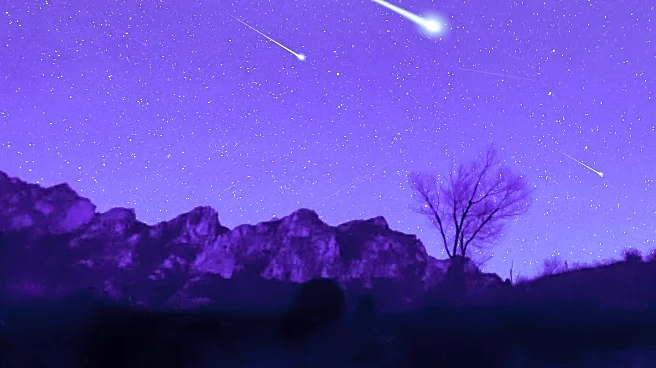What is the story about?
What's Happening?
October's full moon, known as the harvest moon, will be the first supermoon of 2025, appearing larger and brighter than usual. This astronomical event coincides with the Draconid and Orionid meteor showers, offering skywatchers in Florida and across the U.S. a spectacular view. The supermoon will peak on October 6, appearing about 30% brighter and up to 14% larger than a typical full moon. The Draconid meteor shower, occurring close to the full moon, may be difficult to see due to the moon's brightness, while the Orionid meteor shower, peaking on October 21, will benefit from the new moon's darker skies.
Why It's Important?
The supermoon and meteor showers provide a unique opportunity for astronomical observation and public engagement with science. Events like International Observe the Moon Night encourage people to appreciate and learn about celestial phenomena. The visibility of these events can inspire interest in astronomy and science education, fostering a greater understanding of the natural world. Additionally, such events can boost local tourism as enthusiasts travel to areas with optimal viewing conditions.
What's Next?
Skywatchers are advised to look to the eastern horizon at sunset on October 6 to view the harvest moon. The Draconid meteor shower will be visible on the evening of October 8, though the moon's brightness may obscure it. The Orionid meteor shower, associated with Halley's Comet, will peak on October 21, offering better viewing conditions due to the new moon. Observers are encouraged to find locations with minimal light pollution for the best experience.
Beyond the Headlines
The occurrence of supermoons and meteor showers highlights the dynamic nature of celestial events and their impact on cultural and scientific communities. These events serve as reminders of the interconnectedness of Earth and space, prompting discussions on topics such as space exploration and environmental stewardship. They also offer a moment of reflection on humanity's place in the universe.
AI Generated Content
Do you find this article useful?















